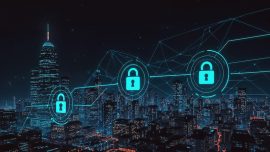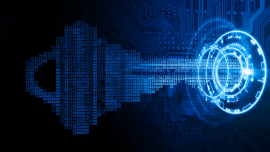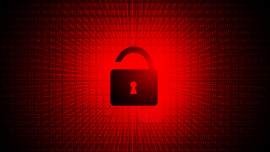
Email security is not just a technical issue, but a human one. Your employees are the first line of defense against cyberattacks that target your email accounts and systems. Therefore, helping employees recognize email security is crucial. This not only safeguards the information of the employees but also the privacy of the business or customers. It prevents unauthorized access to sensitive data such as financial information and important documents.
GUIDELINES FOR EMPLOYEES ON SAFE EMAIL USAGE
Designing clear content for email security training is crucial
The program content should be simple and easy to understand, covering essential topics such as the importance of email security, common methods used in email attacks like phishing, spoofing, ransomware, and Business Email Compromise (BEC) intrusions. It should include signs and indicators of suspicious or fraudulent emails, such as sender’s address, subject line, content, links, and attachments. Should focus on the best practices and policies for handling and responding to email messages, such as verifying the sender, checking the URL, scanning the attachment, reporting the incident, and deleting the email. The importance of using email encryption and authentication tools like S/MIME, PGP, and DMARC should be discussed. Lastly, training should emphasize the consequences and impacts of email security breaches, such as data loss, identity theft, financial fraud, reputation damage, and legal liability.
Identify and guide employees on email security measures
Highlight and guide employees on methods to prevent and identify potential threats when using email. Some recommended methods include:
- Create complex passwords that are at least eight characters long. They should include at least three of the following: Uppercase letters, Lowercase letters, Numbers, Symbols. Avoid using personal information such as your name, address, date of birth, or pet’s name. For example, don’t use “mycompanyl123” as a password; use “!MyCompAny@l21!” instead. The more complex the password, the better.
- Services like Google allow you to enable 2FA on the accounts. When logging in to the email, input your password, and a code is sent to the mobile phone for verification. The account is thus inaccessible without that second piece of information. This keeps hackers away from your email, keeping your data safe.
- Data that isn’t encrypted is readable by anyone who intercepts it in transit, including hackers and other cybercriminals. So the people should use a virtual private network (VPN) instead because: A VPN guarantees that the client device and server connection are secure. Even if someone intercepts the traffic, they won’t read it. When you send an email, the message goes through several servers before reaching its destination. It is there where it must be decrypted so that the recipient can read it.
- You should regularly back up all your files on a server or an external hard drive. This will ensure that you’ll have another copy stored somewhere else. If you ever lose important files via email, you still have them in storage. Or, you can use a cloud-based system that automatically backs up any changes to your files. This is important because cybercriminals often target small businesses. They assume they don’t have the resources to fight back.
- Attackers leverage weaknesses in outdated software to hack into your system. They are a threat since they can steal information or harm your computer in other ways. Ensure that you enable automatic updates for both the operating system and any additional antivirus software that you use. Allow any updates that are available to install themselves promptly.
- Be cautious when opening attachments in emails. Email attachments are commonly used to introduce malware or ransomware onto your computer or server. Before opening an attachment, verify that you know the sender and that the file isn’t suspicious.
- Check where that link will direct you before clicking on any link in an email message. If the link looks suspicious, don’t click on it even if it seems to be from someone you know. Instead, call or text that person and ask if they sent the message.
- Gateway email content filters are software applications connecting the Internet and your mail servers. These email content filters intercept incoming messages. They check them for malware or other suspicious elements that might indicate an attack
Finally, Guidance on effectively implementing security measures for employees
Ensure effective implementation of the mentioned security measures
Update your team regularly on the latest trends and threats in email security, and remind them of the best practices they need to follow.
To cope with the increasing email fraud, GSX’s Harmful Email Targeting Mail Training (TMT) is an advanced solution to help organization members and businesses enhance awareness of cybersecurity. TMT not only realistically simulates email attack scenarios but also provides detailed reports and access logs, visualizing on an enterprise-wide scale.



